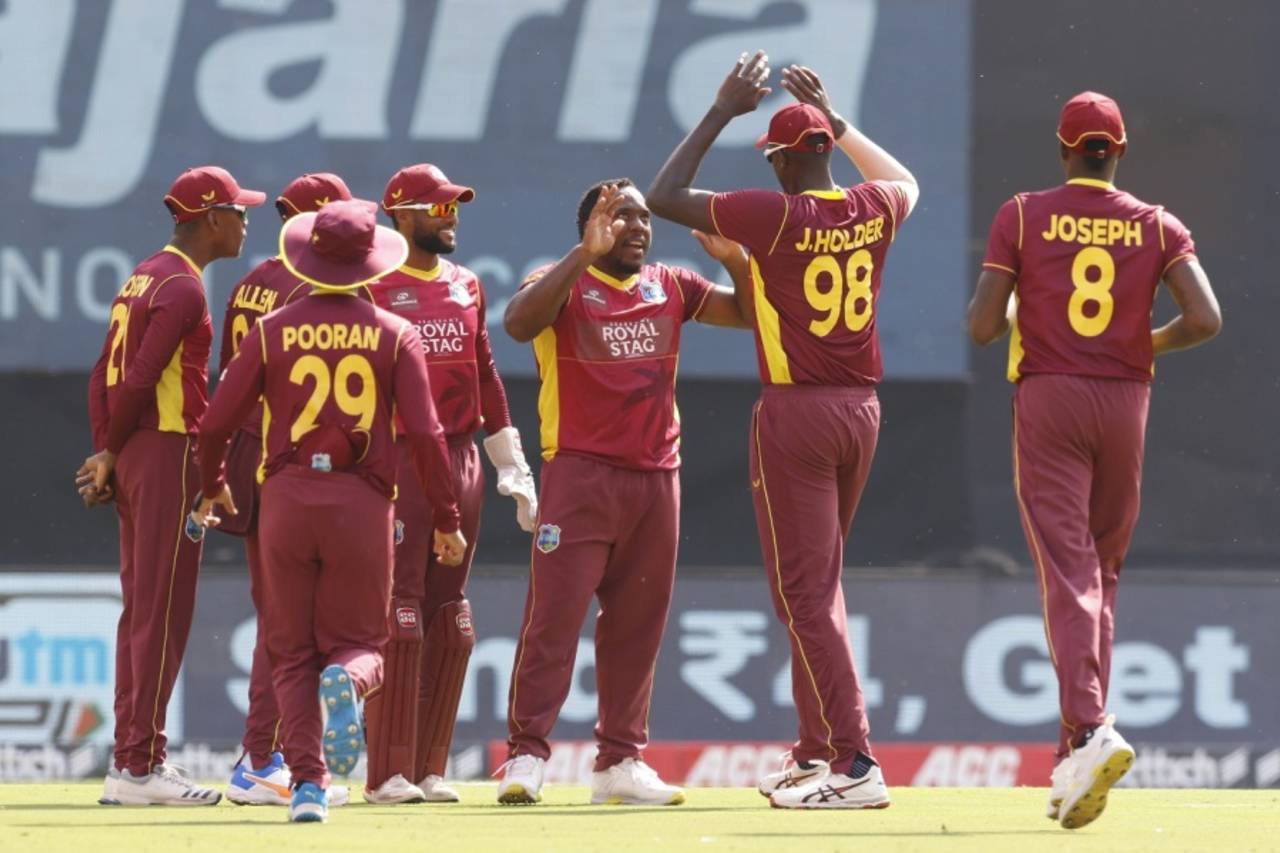What's the lowest ODI total that didn't include a duck?
And what's the biggest partnership between a player on debut and another playing his last Test?

Six bowlers each, for India and West Indies, took at least one wicket in the second ODI in Ahmedabad, a record • BCCI
That match between India and West Indies in Ahmedabad last week was indeed the first one-day international in which each of the 12 bowlers used took a wicket. There are four further instances of 12 different bowlers taking a wicket in the same ODI, as this list shows, but all of those featured more than 12 bowlers, one or two of whom did not manage a wicket. Two of those came in little more than a week in the same competition in Sri Lanka in 2001.
That's an interesting one. It turns out that the biggest such stand is 168, between Saeed Anwar (in his 55th and final Test) and Taufeeq Umar (in his first), for Pakistan's first wicket against Bangladesh in Multan in 2001. There are three other hundred partnerships that fit the bill: Vic Stollmeyer (in his first and only Test) and Kenneth "Bam Bam" Weekes (third and last) put on 163 for West Indies' fifth wicket against England at The Oval in 1939, while in the 1977 Ashes at The Oval Max Walker (34th and last Test) and Mick Malone (only cap) put on 100 for Australia's ninth wicket. In the other instance, Ricky Ponting and Stuart Law added 121 for Australia's fifth wicket against Sri Lanka in Perth in 1995-96 - both of them were making their debuts, but Law never played again so it was his last Test too.
India's 54 in the final of the Champions Trophy in Sharjah in 2000-01 - Sri Lanka had made 299 for 5, so won by a whopping 245 runs - is easily the lowest all-out total in one-day internationals which does not include a duck (there were nine single-figure scores, although only Zaheer Khan was out for 1). Chaminda Vaas (5 for 14) and Muthiah Muralidaran took 8 for 20 between them. Next comes South Africa's 83 all out against England at Trent Bridge in 2008 (no one was out for 0, but Makhaya Ntini finished with 0 not out; Stuart Broad took 5 for 23). There are five further all-out totals of less than 100 in ODIs that did not include any ducks.

The match you're talking about was between West Indies and Australia in St John's in 2002-03, when both teams made 240 in their first innings. Australia added 417 in their second, only for West Indies to pull off the highest successful chase in a Test.
Given a minimum of 50 wickets in Tests, the leader here is the Sri Lankan spinner Ajantha Mendis, whose 70 victims included 27 lbws (38.57%). Currently second, with 32 lbws out of 90 (35.55%) is the Pakistan seamer Mohammad Abbas, whose record might yet change. In third place - or top if you raise the bar to 100 wickets - is Australia's Terry Alderman, whose 170 wickets included 58 lbws (34.11%), most of them (or so it seemed at the time) being Graham Gooch. Just behind Alderman is the Pakistan offspinner Saeed Ajmal, with 59 out of 178 (33.14%).
Steven Lynch is the editor of the updated edition of Wisden on the Ashes